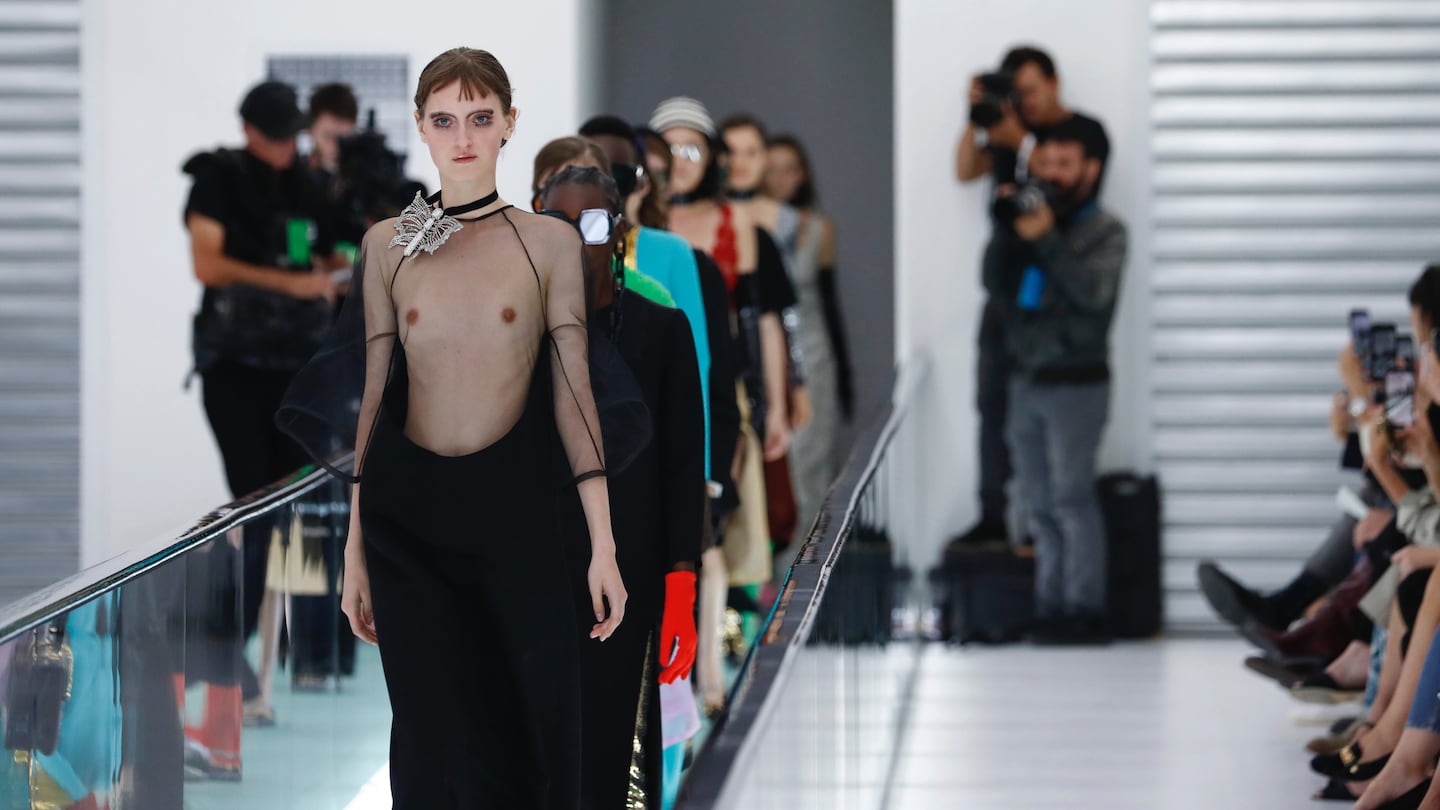
The Business of Fashion
Agenda-setting intelligence, analysis and advice for the global fashion community.

Agenda-setting intelligence, analysis and advice for the global fashion community.

MILAN, Italy —Gucci creative director Alessandro Michele delivered a significant aesthetic shift for the brand at the Spring 2020 runway show on Sunday, which closed a Milan Fashion Week that saw many designers embrace a simpler and edited focus in their collections. Michele picked up on that energy in his own way, delivering a pared-back collection that picked up on Gucci’s sex-charged history.
The shift surprised many in the industry because at the start of the Michele era at Gucci in 2015, industry analysts wondered if the brand would be able to break from the ultra-sexy Tom Ford Gucci era, which had been continued by Ford's successors long after he had left the business in 2004. The brand's new leaders, Michele and Chief Executive Marco Bizzarri, recognised that culture had changed radically in the intervening decades: sexuality and gender were increasingly fluid, and the internet had turned niche interests into mass market trends with much shorter lifespans.
Michele’s fantastical design lexicon came at exactly the right time, providing a rich world of escapism for the luxury shopper that was a near-instant hit and has managed to continue to captivate shoppers.
Key to Gucci's success is a simultaneous creative and merchandising strategy that has shrewdly brought equal attention to short-term fads and staple products which, under Michele and Chief Merchandising Officer Jacopo Venturini's control, feel part and parcel of the same universe.
ADVERTISEMENT
While the approach led to dramatic growth in the first years, sales have started to slow down in 2019, decreasing 2 percent year-over-year in North America in the second quarter of 2019. During the same period, the sales growth rate in the Asia Pacific region also slowed to 23 percent versus 47 percent the prior year.
In our latest in-depth case study, BoF examines Gucci’s powerful merchandising strategy and explores how it has driven record-breaking growth, while also addressing the challenges Gucci faces now as the mega-brand starts to lose its “cool” factor and slow down in growth.
Click here to read the case study now.
Created exclusively for BoF Professional members, case studies deep dive into the important challenges facing the industry today. Discover more case studies and reports from The Business of Fashion here.
From analysis of the global fashion and beauty industries to career and personal advice, BoF’s founder and CEO, Imran Amed, will be answering your questions on Sunday, February 18, 2024 during London Fashion Week.
The State of Fashion 2024 breaks down the 10 themes that will define the industry in the year ahead.
Imran Amed reviews the most important fashion stories of the year and shares his predictions on what this means for the industry in 2024.
After three days of inspiring talks, guests closed out BoF’s gathering for big thinkers with a black tie gala followed by an intimate performance from Rita Ora — guest starring Billy Porter.